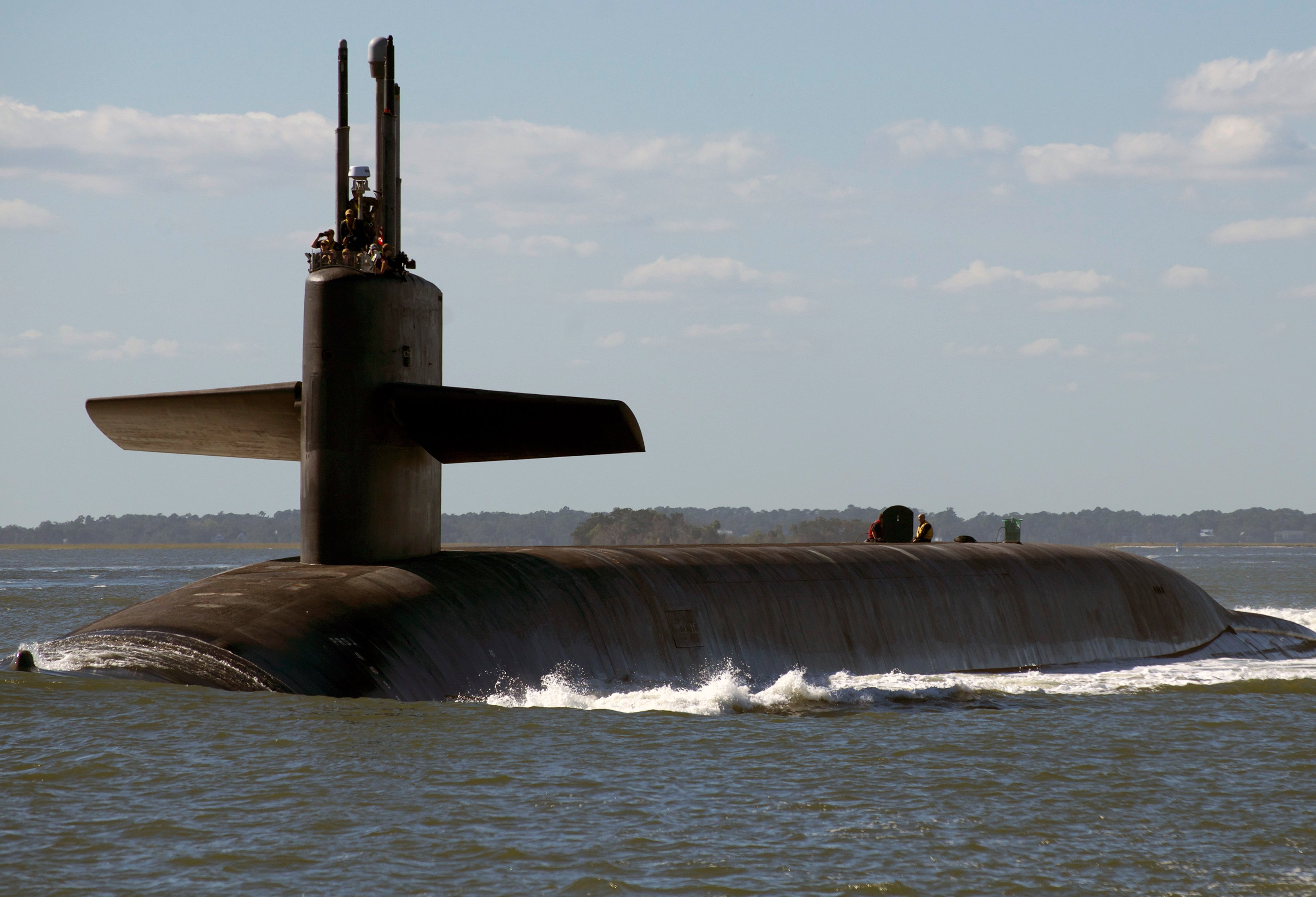
The Pentagon acknowledged Tuesday it had deployed at least one low-yield nuclear warhead on a U.S. Navy nuclear ballistic missile submarine.
Last week, The Federation of American Scientists published a report detailing their belief Ohio-class ballistic missile submarine USS Tennessee (SSBN-734) left the Kings Bay Submarine Base, Ga., for a strategic deterrent patrol at the end of 2019 carrying at least one W76-2 low yield warhead on a Trident submarine-launched ballistic missile (SLBM).
“We estimate that one or two of the 20 missiles on the USS Tennessee and subsequent subs will be armed with the W76-2, either singly or carrying multiple warheads. Each W76-2 is estimated to have an explosive yield of about five kilotons. The remaining 18 missiles on each submarine like the Tennessee carry either the 90-kiloton W76-1 or the 455-kiloton W88,” wrote Hans Kristensen, the director of the Nuclear Information Project at the Federation of American Scientists.
Until Tuesday, the Pentagon had not confirmed the report. A statement from John Rood, undersecretary for Defense, did not name the submarine carrying the W76-2 low-yield SLBM, just the Navy fielded at least one such missile.
Tennessee returned from patrol on Jan. 11, 2020, according to Navy information.
Rood’s statement justified the inclusion of a low-yield SLBM on a boomer by citing the 2018 Nuclear Posture Review. Deploying low-yield SLBMs on submarines is seen as a way “to address the conclusion that potential adversaries, like Russia, believe that employment of low-yield nuclear weapons will give them an advantage over the United States and its allies and partners,” said Rood’s statement.
However, this belief the U.S. Navy needed to deploy low-yield nuclear warheads on submarines was not fully embraced by lawmakers. Last year, the House Armed Services Committee split among party lines over whether to authorize the deployment of low-yield nuclear warheads on submarines, during the Fiscal Year 2020 National Defense Authorization Act debate.
The U.S. needs to let Russia and any other nuclear power understand escalation leads to escalation, and the U.S. response to the use of nuclear weapons will be swift and profound, said Rep. Adam Smith (D-Wash.), the HASC chair, during the FY 2020 NDAA mark-up in June.
“We don’t care about a fair fight. We’re going to kick their ass if they take us on,” Smith said. “So, why we’re obsessing about a proportional response, I don’t know.”
In contrast, the underlying notion of prohibiting the Navy from deploying low-yield nuclear weapons on submarines was seen as taking away an option from defense planners, said Rep. Mac Thornberry (R-Texas), the HASC ranking member, during the June mark-up session.
“I believe we need more options,” Thornberry said.
“We need to be strong.”
Meanwhile, the Senate version of the FY 2020 NDAA authorized the deployment of low-yield nuclear weapons on submarines. The final bill to emerge from a conference committee in December, and be approved by both chambers and President Donald Trump, authorized the deployment of low-yield nuclear warheads on submarines.
While the belief Russia’s arsenal of low-yield nuclear weapons poses the greatest risk, Kristensen writes this might not be the case.
“There is no firm evidence that a Russian nuclear decision regarding the risk involved in nuclear escalation is dependent on the yield of a US nuclear weapon,” Kristensen wrote. “Moreover, the United States already has a large number of weapons in its nuclear arsenal that have low-yield options – about 1,000 by our estimate. This includes nuclear cruise missiles for B-52 bombers and B61 gravity bombs for B-2 bombers and tactical fighter jets.”
The following is the complete statement from John Rood, undersecretary of Defense, about the deployment of a W76-2 low-yield submarine-launched ballistic missile (SLBM):
“The U.S. Navy has fielded the W76-2 low-yield submarine-launched ballistic missile (SLBM) warhead. In the 2018 Nuclear Posture Review, the department identified the requirement to “modify a small number of submarine-launched ballistic missile warheads” to address the conclusion that potential adversaries, like Russia, believe that employment of low-yield nuclear weapons will give them an advantage over the United States and its allies and partners. This supplemental capability strengthens deterrence and provides the United States a prompt, more survivable low-yield strategic weapon; supports our commitment to extended deterrence; and demonstrates to potential adversaries that there is no advantage to limited nuclear employment because the United States can credibly and decisively respond to any threat scenario.”





